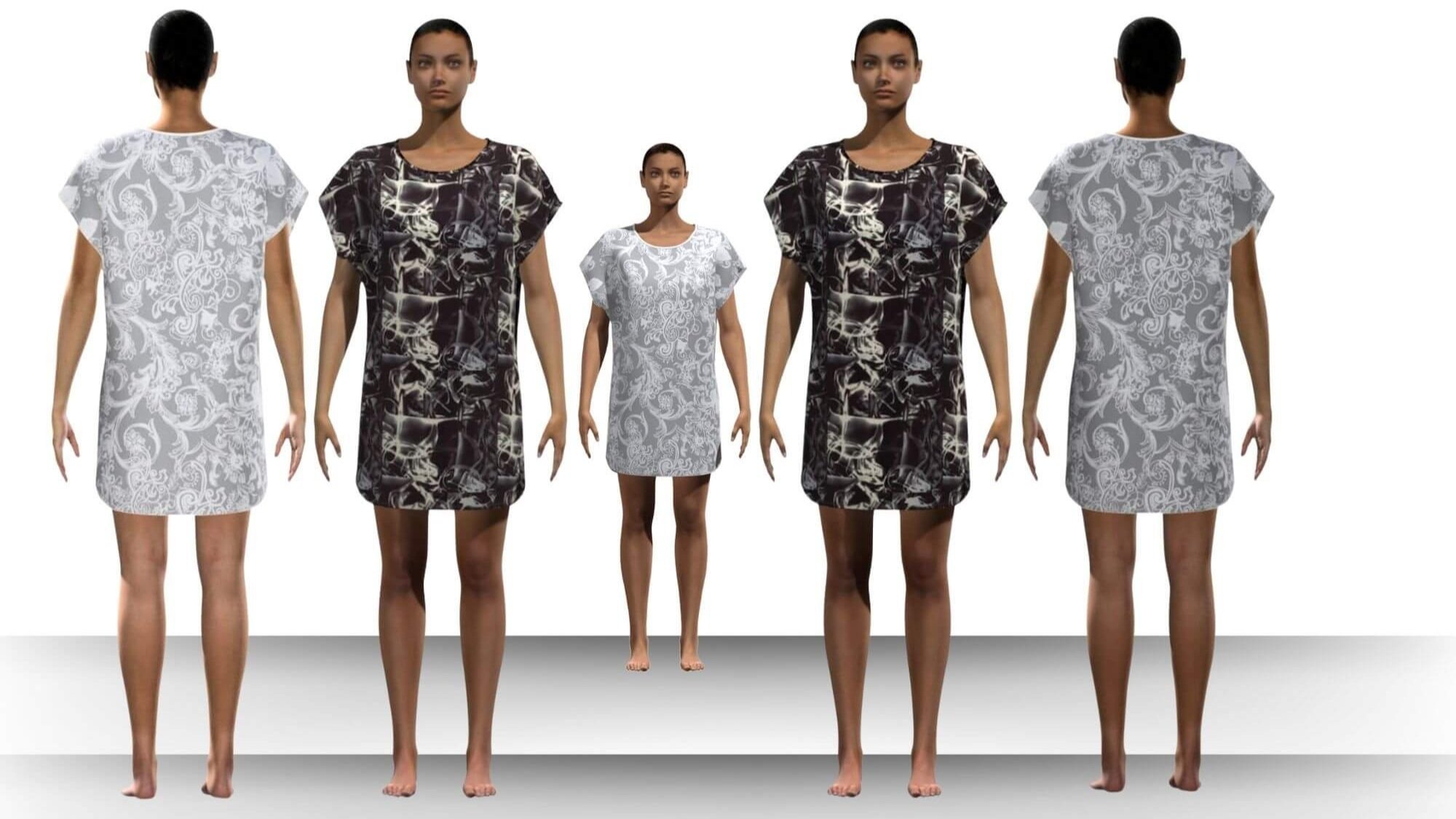3D Digital Fashion Sampling
April 2, 2019
What is 3D Virtual sampling?
3D Virtual sampling and prototyping is a new way to explore design concepts and variations before the actual production. 3D technology helps designers and technical designers see, validate, and refine the product before moving to real physical prototyping and manufacturing. For many industries, this is the norm. The apparel industry is still in the process of adaptation and implementation.
3D Virtual Sampling for Apparel
Many sophisticated 3D CAD software options are available for apparel to perform 3D virtual sampling. They are all good, and the level of reaping the benefits will depend on the user’s point of view. Designers will use the software differently than technical designers or manufacturers. Designing, product development, sampling, and producing a clothing line is exhausting and time-consuming. Add to the mixture handling multiple seasons, and your head will spin.
The most common technologies adopted in the Apparel Industry are Adobe Illustrator, Photoshop, Excel, and many PDM and PLM systems. That is about it. Larger companies have been using 3D virtual prototyping for designing and clothing development for a while. They do have an advantage in available resources and manpower. It is still a work in progress for smaller apparel companies with limited budgets.
3D virtual sampling opens the door to a new apparel development and manufacturing era. The process is more efficient, streamlined, and less time-consuming.
Imagine replacing manual tasks with digital assets (designing, sampling, and pattern making) with the opportunity to eliminate communication errors among involved parties (design, technical, production, vendors). However, 3D technology adoption among apparel brands is still sporadic. It is and will continue to be a work in progress.
3D virtual sampling for Designers
3D fit technology allows designers to create and simulate realistic garments on the digital fit model, reducing the wait time to see and change the design or stylistic details.
In reality, to do a simulation, the designer needs to get a digital pattern or block pattern from a vendor (usually DXF or other suitable formats compatible with the software). In some cases, digital patterns are inaccurate in fit or styling, or files would have additional pieces not needed for simulation (i.e., linings, facings, etc.). If pattern pieces are not properly labeled, it will bring further frustration (and time) to sort out the pieces required to prepare the file for simulation.
Let’s assume that all goes well. The 3D image looks great. All details are exactly as imagined. In most cases, the factory cannot use the same digital pattern to make the actual sample. Factories will have to create a development pattern to make the fit sample correspond in fit to a 3D image. One must know how to use the software to take full advantage of 3D designing, simulation, and fit sampling. ( Deep Dive:3D Design Technology Disrupts the Fashion Supply Chain - Coresight Research )
The actual implementation of 3D Virtual prototyping is much more complicated than assumed.
3D Virtual Sampling for Technical Designers and Production
Shifting to 3D Virtual sampling offers many benefits for technical designers and production. Lengthy fit sampling time could be significantly reduced. Integration of 2D to 3D (2D pattern simulation on 3D avatar) allows technical designers to check the pattern for fit and balance before approving the style for production. 3D simulation lets them digitally identify and correct fit errors instead of going through many fit samples.
For technical and production departments, the 3D virtual sampling process creates the opportunity to reduce the workload and make the pre-production approval process more efficient.
In reality, technical designers and production teams have a demanding day-to-day schedule. It is challenging to plan additional hours dedicated to learning and incorporating 3D technology into the current workload, mainly if the manpower is limited ( Addressing Resistance to 3D Virtual Prototyping in Apparel Design and Product Development)
The solutions to the current adoption problem:
-Changing the mindset and fully understanding the overall long-term benefits of 3D virtual sampling.
-Dedicate a few designers and technical designers open to learning and incorporating technology into their existing workflow and piloting a few styles from product development to the final approved production sample. Communication and coordination of digital assets with vendors are crucial parts of the process.
-The key is to start a small and manageable pilot program that can quickly pivot and adapt if faced with difficulties. A hands-on learning experience is valuable and helpful when planning and deploying the next step for 3D technology implementation within the organization.
-For smaller fashion brands, many companies offer pattern-making services and 3D virtual prototyping solutions to help with clothing product development and production.
General benefits of 3D virtual prototyping:
-Analyzing the process before creating the product
-Reducing the time to develop a clothing line
-Eliminate the need to create a physical clothing prototype
-Increase the quality of the design
-Lower the cost of clothing development
-Maximize overall product development efficiency
-Reduce the time in all production stages
-Smooth design and fit refinement
-Test the fit and design before making physical samples
Some Final Words
-Many apparel companies are searching for technology-based solutions to innovate and update the product development and production process. Desire and need for change are there. It’s been there for years. We are witnessing a transformation.
-Implementing 3D virtual prototyping is gaining traction, but adoption still faces considerable resistance among people who need it the most.
-Although 3D designing and prototyping is still a novel idea among most apparel brands and manufacturers, the innovative and more efficient design and manufacturing process will become essential to retail clothing survival under the ever-demanding consumer pressure for the immediacy of new looks.
Technology Advanced Apparel Service




















